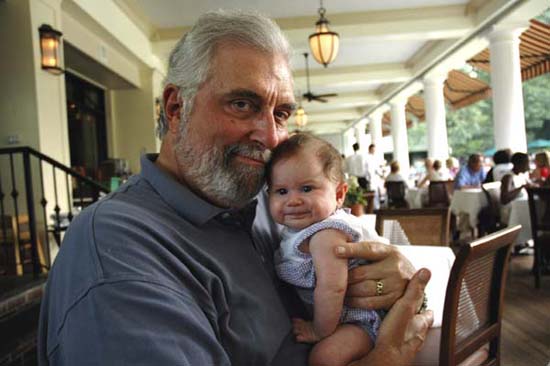The Sopranos Redux

The Sopranos has been out of our lives now for weeks, but somehow I just can't let it go. Today I came upon a piece in the current online edition of the New York Review of Books by Geoffrey O'Brien that is as smart and elegant a summary of the show and its attractions as you are likely to find. Here is a sample:
And here is O'Brien's analysis of how Chase brought us, in the end, face to face with the reality that is mob life.Chase's neatest trick was to make a show about the mob—a show that laid out in gratifying detail the workings of scams and hits, political connections and techniques of intimidation, internecine maneuverings and FBI infiltrations—that constantly suggested that the mob was not what the show was really about. By assimilating the mob into everyday life he dissolved it. Tony Soprano was the gangster who lived on the other side of the fence and sat at the next table in the restaurant, mingling in a world quite sufficiently corrupt without him. He was not, in old movie style, the outsider casting a sinister shadow over the American family; he was himself the prime representative of that family. He had grown up on sitcoms and Seventies rock, and there were moments when Tony and Paulie in the backroom of Satriale's metamorphosed into Ralph Kramden and Ed Norton at the Raccoon Lodge on The Honeymooners, or when Tony, launching one of his racist zingers, seemed a stand-in for Archie Bunker of All in the Family.
Tony was a domesticated end point for the romance of gangsterism that looks to be America's most durable contribution to world folklore. It was a romance fed by movies, not just the early classics with Cagney, Robinson, and Muni, but the harsher and less poetic later movies—The Enforcer (1951), The Brothers Rico (1957), Johnny Cool (1963)—in which gangsterism was no longer a violent aberration but the deadly norm, administered by unpitying accountants flanked by expressionless hitmen in dark glasses. (Cagney's Public Enemy—a Tony Soprano favorite—looked like a Miltonic rebel angel by comparison.) The cycle culminated in Coppola's Godfather films and Scorsese's Goodfellas, crucial reference points for The Sopranos.
It was disturbing to realize how much we did care about these people. Each of the final episodes was anticipated not so much with pleasure as dread, since each posed the risk of an unacceptable loss, as characters in whom we had invested years of attention were swept away. None of the characters in The Sopranos precisely resembled Little Nell, of course. That it was possible to feel so much on behalf of characters often devoid of the least capacity for empathy was a typical Sopranos paradox. As if to emphasize that point, the last episodes went out of their way to cast Tony and the rest in an ever more remote and unsympathetic light. The endgame obliged us to be stripped of any remaining illusions. Perhaps, to ease the pain of our disengagement, Chase felt we should be reminded that we had permitted ourselves to love monsters.Good stuff. As for his view of the much discussed final episode,
No imaginable end—Tony killed, dead by mischance, in prison, or in the witness protection program—seemed a satisfying prospect. In the last episode, tantalizingly, event followed event with the promise of freshly evolving situations, just as if the conclusion were not in sight. Perhaps the show would not end at all. In a sense it didn't. To the dismay of many viewers, a black screen—at the moment when Tony may or may not have been fatally shot by a hit man who may or may not have been there, as a jukebox song stopped on the phrase "don't stop"—froze all further narrative development. Or perhaps this was a way of conveying that the show had already ended, perhaps a long time before. After all, was there any kind of ending that we had not already seen? In a sense it had all been nothing but a succession of endings. We could hardly complain that there hadn't been enough of them.
Labels: The Sopranos

